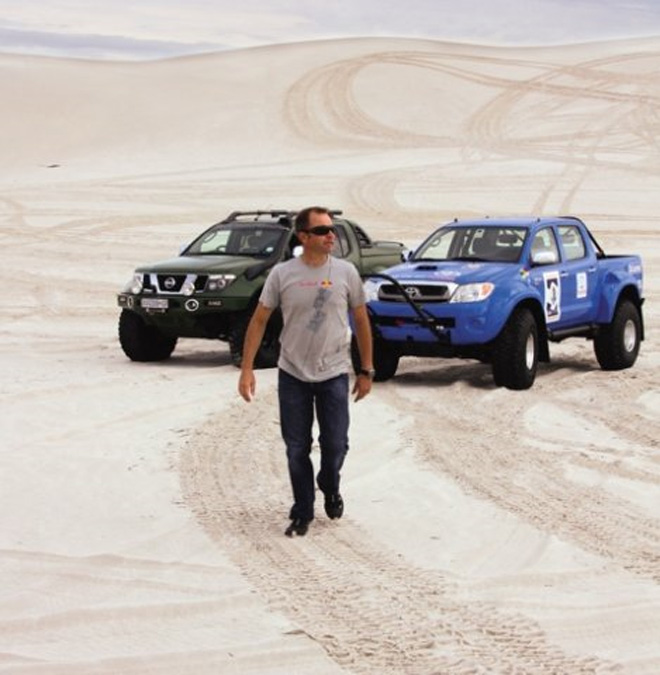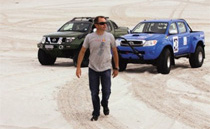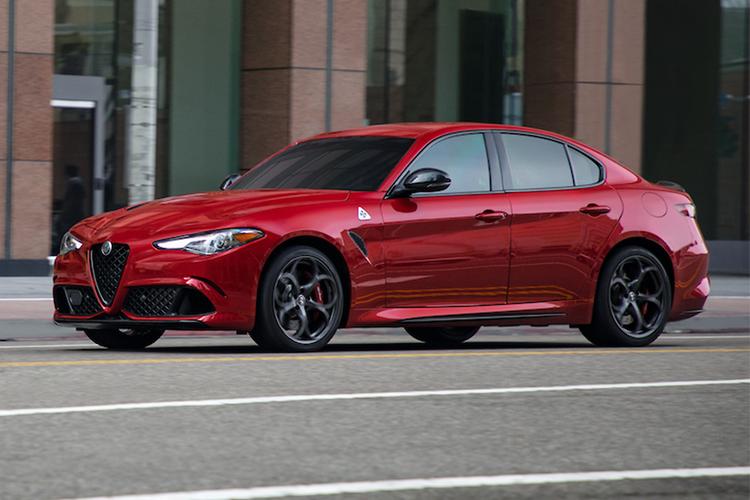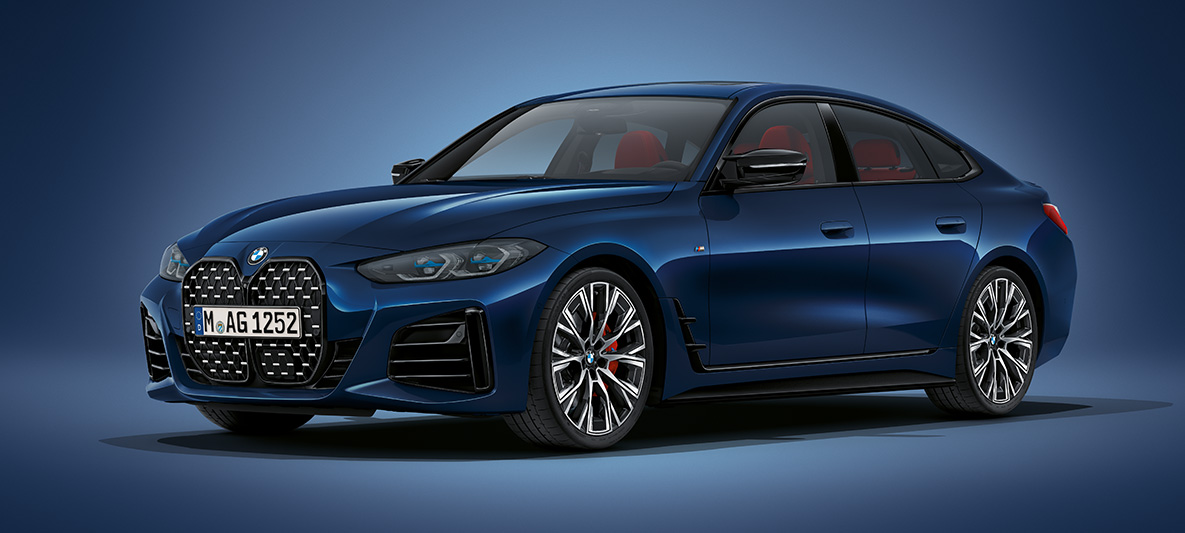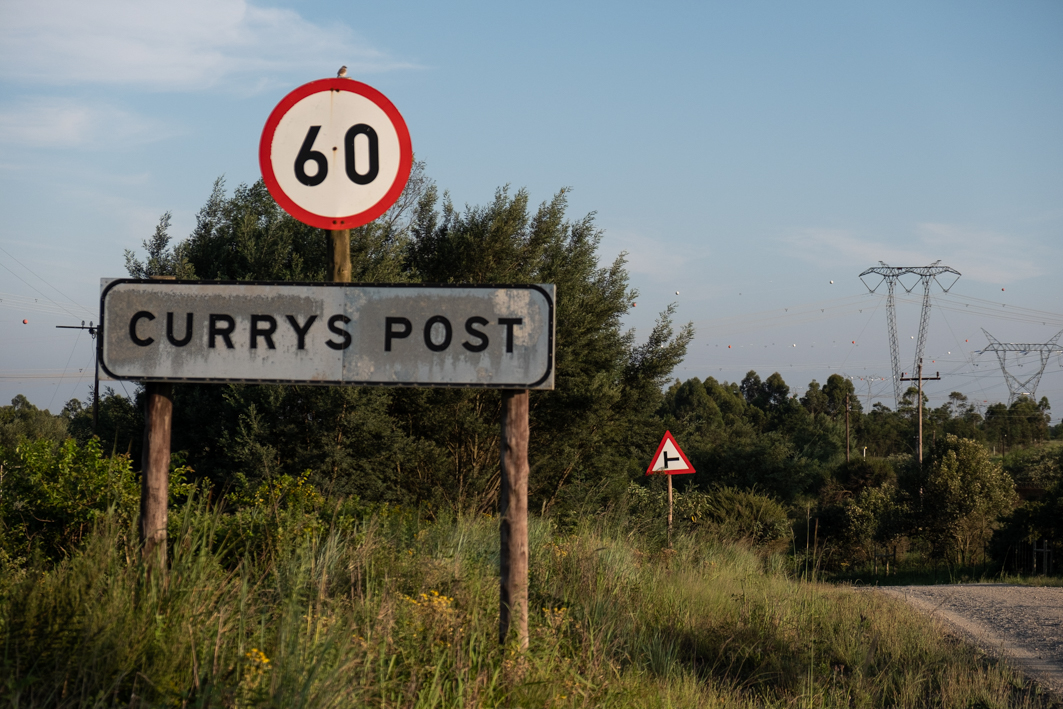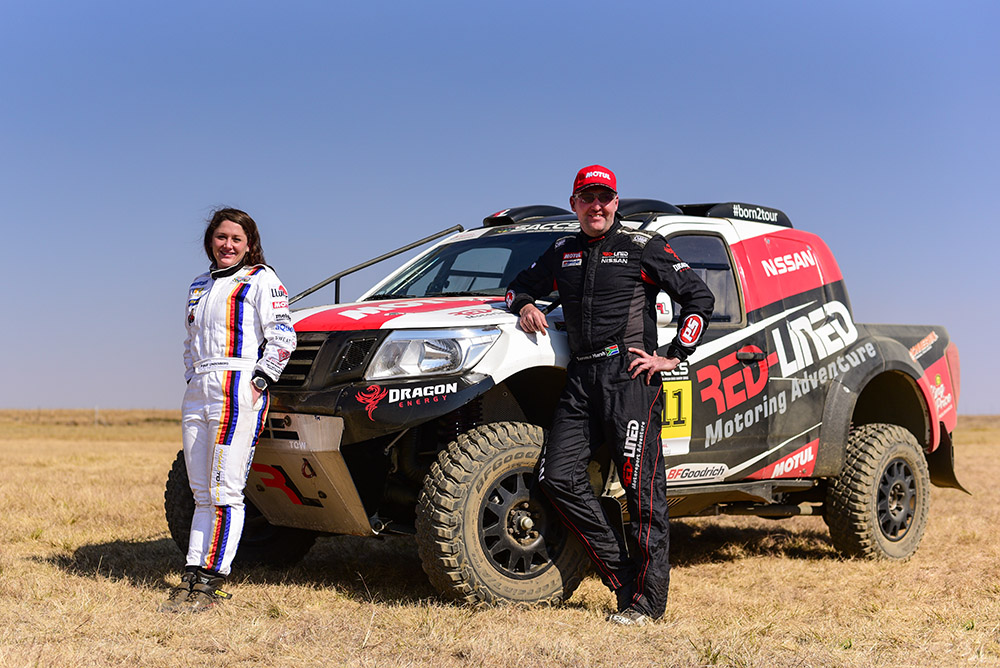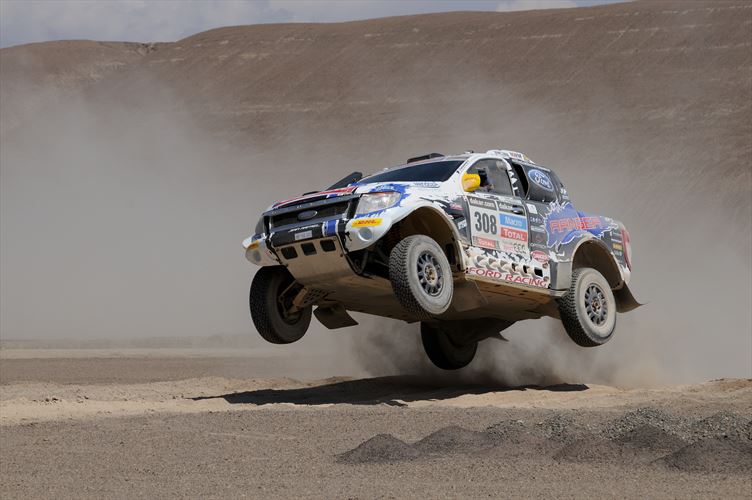Text: Danie Botha
Photography: Jannie Herbst
“I hope the bakkies have enough power. With those big wheels, they’ll need plenty of it in the dunes,” said South Africa’s 2009 Dakar Rally champion, Giniel de Villiers, over the phone.
Racing drivers. They are all the same. Power, power, power. It’s like Smarties for a five-year-old. Enough is just never, well? enough.
De Villiers’ factory Red Bull Volkswagen RaceTouareg, which he has driven in the Dakar Rally for the past three years, is powered by a 2,5-litre diesel engine with twin turbochargers.
The Volkswagen’s engine produces 230 kW of power, and “more than” 600Nm of torque. That’s what the official word is. The actual torque figure is probably closer to 3000Nm. Okay, not really. But it must be something like that.
Permanent four-wheel drive with three limited slip diffs (front, centre and rear), a five-speed sequential gearbox, 250mm worth of suspension travel and a minimum weight of 1787kg ensure amazing all-road capability and performance.
For a turbodiesel-engined off-road racer, it’s frightfully fast: The Volksie can sprint from 0-100km/h in just 5,9 seconds and reach a top speed of around 190km/h, depending on gearing.
So one has to appreciate where Giniel comes from – in the Race Touareg, he certainly has power and performance to spare.
We were speaking to Giniel as part of the arrangements for a unique shoot-out.
It had all happened rather suddenly. A recent enquiry about the whereabouts of Toyota’s AT38 Arctic Trucks Hilux had revealed that it was in Cape Town, after a working trip to Antarctica in January. That venture was part of an ongoing process “to introduce the vehicle on a trial basis to scientists, researchers and personnel from the Department of Environmental Affairs operating at the remote SA base”.
LA Sport had transported Project Navara to Cape Town in March, for the Getaway show, where the bakkie went on display at the LA Sport stand.
After a few phone calls the deal was done – the Navara’s return trip to Gauteng was postponed by a week, so both giant bakkies were available for the monster shoot-out.
Next we needed a suitable venue where Giniel could explore the vehicles’ capabilities. We decided on the Atlantis Dunes near Cape Town – neutral ground. And here Giniel could let rip, while the chance of damage to the vehicles was limited.
THE MAN OF THE (BIG) MOMENT
We are standing at the entrance to the Atlantis dunes, waiting for SA’s premier international motorsport exponent to arrive.
What would he be driving? Okay, so it’s not going to be a VW CitiGolf. Maybe something sporty, like a new Volkswagen Golf R, or a Polo GTi? Definitely not a Caddy. What about a Touareg? yes, that sounds logical.
He races one, so Giniel’s “company car” must certainly be a Touareg. Not that there are any similarities between the space-frame racing vehicle and a normal road-going one, other than the name. But it is a Touareg.
But when Giniel arrives, none of our predictions prove correct – it’s a white VW Amarok 2.0BiTDI 4Motion that pulls into the parking area.
“Sooo…they’ve given you the new Amarok to drive?” we ask, after the introductions are complete.
“Ja – the Touareg is at home,” he says, matter-of-factly.
Professional racing drivers have it all. Not one but two company cars, fame and fortune, jet-setting all over the world. What a life!
But if anyone deserves the fruits of success it is Giniel. The down-to-earth Stellenbosch resident has earned it the hard way, along with the respect of friend and foe alike, both locally and in the international arena.
In 2009 Giniel was invited to take part in the Race of Champions event in Beijing, China. Fellow competitors included motorsport legends such as Michael Schumacher, Sebastien Vettel, Jenson Button, Mick Doohan, Travis Pastrana, Marcus Gr?nholm, Mikko Hirvonen… to name a few of motorsport’s greats who shared a beer and a drive with our Giniel.
In started in 1993 when he won the Stannic Group N national class D championship. In 1994 he moved up to class B of the same event, driving a Nissan Sentra – and also won the championship.
By 2000 he was rated as “the world’s most successful Touring Car driver”, following four consecutive championship wins in the SA Touring Car championship, in a Nissan Primera. After Nissan pulled the Touring Car plug, Giniel moved over to Nissan’s off-road racing team, driving a Hardbody.
After winning this championship, Giniel’s big Dakar break came in 2003 when he was contracted as a factory driver for the Nissan Motorsport team. His team-mates were rallying greats Ari Vatanen and the late Colin McRae.
That year both his more fancied team-mates failed to make a great impression, but Dakar rookie Giniel finished in a solid fifth place overall.
The following year, still driving for the factory Nissan team, he demonstrated that his first Dakar performance was no fluke, and finished seventh.
Then new Dakar contender Volkswagen snapped him up – and in 2009 he became the first African to win the Dakar Rally. It was also the first time that a turbodiesel-powered vehicle had won.
In 2010 another VW factory driver, Spaniard Carlos Sainz, won the race. Giniel’s engine acted up, and relegated him to an eventual seventh place overall.
Early this year Giniel finished second in the latest edition of the toughest motorsport event on the planet, behind another VW team-mate, Qatari Nasser Al-Attiyah.
Giniel has since competed in the SA national rally championship’s premier S2000 class in a BP VW Polo, along with navigator Ralph Pitchford, and finished in a commendable eighth place overall.
“The top guys at the front were going absolutely flat-out all the time,” he says. “I had driven only 20km in the S2000 car before the event, so I took my time in getting to know the Polo rather than go hell for leather and not finishing.
“On the second day my stage times were much more competitive, so with a bit more seat time I should be good to go,” he says.
Before we get to the actual driving test of the big-wheeled bakkies, some background on the two machines Giniel was about to put through their paces.
BIGGER IS (ALWAYS) BETTER!
In the left-hand corner? Arctic Trucks’ Toyota Hilux AT38.
This company can trace its origins back to 1990, when Toyota in Iceland began custom-fitting and modifying 4x4s for tough overland and Arctic conditions. These days Arctic Trucks operates independently from the Toyota dealer network in Iceland.
With 21 years of experience in building big-wheeled Toyota Hilux bakkies, the designers and engineers have learnt a few lessons about the Hilux. Some of their upgrades have been incorporated into all Hilux bakkies, sold across the world.
However, building the AT38 Hilux has been a time consuming and complex business. Some parts of the suspension were relocated, using custom-developed and duly tested parts. For instance, the rear differential is moved slightly back to better accommodate and drive the big 38-inch wheels, and to improve traction and the durability of the parts.
The front assembly is also modified with custom parts, and is located lower than in a standard Hilux. This ensures that the front driveshafts operate at an ideal angle, reducing the chance of a shaft snapping in extreme 4×4 conditions.
Arctic prefers to keep the vehicles’ engines stock standard. The only modifications done in this department are special heater and filtration systems for the oil and diesel supply, as well as a custom exhaust system. For the rest the engine is a standard 3,0-litre D-4D mill. Ditto with the disc and drum braking set-up.
Although customers can specify their requirements when ordering an AT38, the typical fare include front and rear differential locks, a built-in rollcage, the standard Hilux transfer case, fuel tanks with a combined capacity of 160 litres, and at least 346mm ground clearance under the belly (normally 450mm with the special tyres fully inflated).
Interestingly, Arctic Trucks prefers an automatic gearbox over a manual one. The company says an automatic gearbox (that uses a torque converter) is not only kinder to the drivetrain than a manual gearbox but makes traversing tricky off-road terrain easier. It also takes the risk of clutch failure in extreme 4×4 conditions out of the equation.
This AT38 was built in South Africa, in a Sandton-based Toyota Motors SA workshop. Arctic Trucks imported a platoon of technicians and engineers, as well as specialised parts and accessories, to build several versions of the Hilux here. These range from the massive 6×6 Hilux bakkies with 44-inch wheels to the AT38s and two AT35s.
The latter two bakkies are due to undergo durability testing, and it is expected that the Imperial Toyota group, in partnership with a newly established company called Artic Trucks Africa, will build bakkies for the local market. A standard warranty is likely to be part of the deal.
And in the right-hand corner? LA Sport’s Nissan Navara with a 38-inch conversion. Although LA Sport’s Lionel Lewis has been building big-wheeled Hilux bakkies for the past 20 years, this little project came about quite by chance.
At the end of 2008 the standard Leisure Wheels Navara was involved in a relatively minor bumper bashing. We went through the process of obtaining quotes from panelbeating shops to return the black Nissan to its former glory. But then we had an idea: why don’t we replace the damaged front bumper with an after-market bullbar? Besides saving a bundle on the insurance claim, a beefy bumper would give the Navara a bit more of an off-roady look, we reasoned.
Then a few more suggestions came up: while we’re busy with the bumper, why not fit a winch? And a snorkel? A new set of wheels and off-road tyres? And, why not turn this Navara into the most awesome Navara this country has ever seen?
So we approached Lionel, and told him about our ambitious ideas. His answer? “Bring it in. We’ll do it.”
About 12 months later, Project Navara was complete, following some development work. And it looked every bit the part of an extreme off-roader. In fact, it has been a real show stopper.
But can it play alongside a specialised, highly developed off-road machine such as the AT38 Hilux?
Compared to the Artic Hilux, the Navara’s suspension is still relatively standard. It features a suspension and body lift, a TJM suspension system, custom wheel arches (made from steel), and a slightly modified 2,5-litre turbodiesel engine.
But it didn’t get the major suspension surgery applied to the AT38. It relies on the TJM shocks and springs, the suspension and body lifts, the grunt from the engine and the flexibility of the six-speed manual gearbox to make those big 38-inch Mickey Thompson mud terrain tyres do the talking.
Right, enough said about the background and technical details. It’s time for blast off!
THE NAVARA
First up is the jerry can-green Navara that the LA Sport team has christened “The Hulk”.
“The Navara looks the part, but those tyres are very wide. We’ll have to see how it goes,” says Giniel, before sliding in behind the steering wheel.
He starts her up, and with high-range selected, Giniel and the Navara take off, heading for the dunes. And, like any self-respecting, world-renowned racing driver, De Villiers doesn’t waste time in taking the Navara to its maximum velocity on the dunes.
Later he switches to low-range, and up and down he goes. Now he has to work the gear lever more often than not, with the shorter ratios in play. Eventually he pulls into the temporary “pit area”. It’s time for Giniel’s verdict.
“The power is good, although I’d prefer a bit more,” he says.
Okay, so we knew that one was coming.
“There is too much low-speed damping on the shocks, and too little high-speed damping. So besides a hard ride at slower speeds, the wheel travel is limited.
“The Navara actually sacrifices momentum as the wheels momentarily lose contact with the sand, because of the damping issues. A more compliant suspension with more travel would ensure that the wheels’ traction is not compromised.”
That one was unexpected.
“When I raced in the local off-road championship, we used Mickey Thompson tyres. They were extremely resilient against punctures, thanks to the heavily reinforced sidewalls. I suspect the same is true about the Mickey Thompsons on the Navara. Softer sidewalls provide more flex and better flotation on sand. I think the Navara’s tyres would fare much better in rocky terrain.”
“But surely tyres as wide as the MTs on the Navara, with such a wide footprint, should fare better in the sand? Don’t they provide more traction, with the wider track?” we ask.
“While developing the Race Touareg for the Dakar, we did several tyre tests to see what worked best, with a combination of speed and durability being the obvious goal. We tested wide off-road tyres (about 265mm wide), but found that tyres about half that width, combined with high sidewalls, were actually 3,5 seconds per kilometre faster in the sand.
“Wider tyres don’t necessarily result in more speed and grip. More flexible sidewalls, though, would improve the situation,” Giniel explains.
And his overall view on the Navara?
“Jaaaaa, it looks okay. But it doesn’t seem to go as well as it looks.”
THE HILUX
It’s time to put the Hilux AT38 through its paces on the dunes.
Giniel jumps in behind the left-hand steering wheel, and starts up. The engine does sound different to a standard Hilux. This is largely due to the custom exhaust system, designed for Arctic conditions – and probably giving the Toyota a little more power.
Giniel shifts the gear lever to the “D” position – and off he goes.
Watching the blue bakkie zoom up and down the dunes, one thing is as clear as day – the Toyota’s suspension is much more compliant that the Navara’s. We can see the difference with our own eyes.
While the Nissan’s suspension had bottomed-out a few times, especially at higher speeds, the Toyota’s doesn’t seem to break a sweat, despite Giniel’s best efforts to provoke some perspiration from the Koni-dampers.
Giniel starts experimenting, too. He drives the Toyota at a seemingly too slow speed up a steep dune. But the blue bakkie doesn’t grind to a halt? it just keeps on clawing its way up the dune, in a most undramatic but very impressive way.
Giniel doesn’t bother with low-range in the Hilux – it goes everywhere, easily.
He pulls into the pit area.
“The Navara definitely has the power advantage, but the Hilux’s suspension is so much better that the fewer kilowatts don’t count against it at all. It is really impressive in the sand.
“The Toyota’s tyres also give it an advantage, I reckon. The sidewalls are softer and more flexible, so the Toyota “floats” better on the sand than the Navara. And the ride is way more comfortable in the Hilux than in the Nissan,” says Giniel.
THE FINAL VERDICT
“If you had to choose one of these bakkies to drive across the Sahara Desert, or the Pantagonia Desert in Argentina, which would it be?” we ask.
“The Hilux, no question. And I’d take it with the automatic gearbox, too,” Giniel says. “Although the Navara has the edge in the power, the Arctic Trucks bakkie’s performance in the dunes was very impressive. But the more comfortable ride in the Toyota is probably the biggest motivator for me. After years of off-road racing my back is not a happy one, so a softer ride is preferable. Add the mechanical grip, courtesy of the better wheel travel and better flotation offered by the softer Arctic Trucks 38-inch tyres, and the Hilux is certainly my first choice in these conditions.”
IN CONCLUSION
R450 000. That’s the price difference between the Arctic Trucks AT38 (that retails for about R1,1-million, as tested here), and the local-is-lekker Nissan Navara from LA Sport (about R640 000). That’s a fair amount of cash, in any man’s terms.
But that extra money buys you a modification that has been thoroughly proven and tested over a long period. These modifications are mostly focused on usage on snow, ice and sand driving. Still, in 2010 we had driven the big-wheeled Arctic Trucks in Iceland over a variety of terrain, including rocky sections – and they fared very well in this application, too.
And the Navara? It was primarily built as a show vehicle. Still, over the past year it has shown many times that it can go the off-road mile. It has successfully negotiated sand, mud, rocks and the deepest of dongas.
Sure, its suspension may not be as refined, as polished or as good as the Hilux’s, but at the price, it does offer a heck of a lot of big-wheeled 4×4 bang for the money.
In the end, though, we can conclude: the brilliance of the Arctic Hilux’s specially engineered suspension is beyond question. But the AT bakkie is expensive – all that specialised tinkering with the top-class suspension doesn’t come cheap.
Although beauty is in the eye of the beholder, we reckon the Navara still has the edge in the street cred and mass appeal department!
QUOTES
“If we spent another R100 000 on developing the Navara’s suspension, it would probably be as good as the Arctic bakkie’s. But we prefer to offer our customers a reasonably-priced option that can still go most places the expensive AT bakkie can. And Africa is Africa. Our bakkie was developed for African conditions, and not the Arctic.” – Lionel Lewis, LA Sport.
“We are honoured that a fantastic driver like Giniel de Villers enjoyed our vehicle so much. One has to take into account that this Hilux was built by our Icelandic team in SA, according to specific customer requirements for an Arctic expedition – hence the price tag. Once our operation is up and running in SA, a similar bakkie will cost closer to R850 000. It would be even less if we skipped specific ?polar set-up’ specifications.” – Emil Grimsson, Arctic Trucks.
